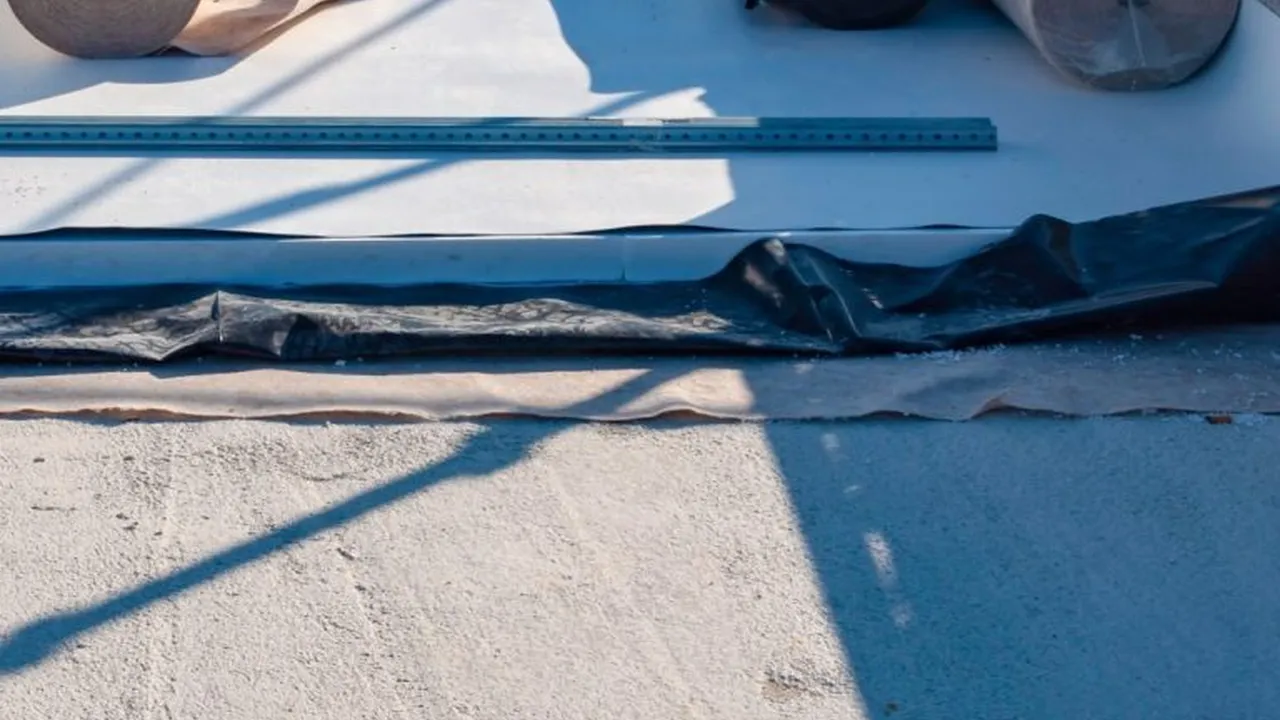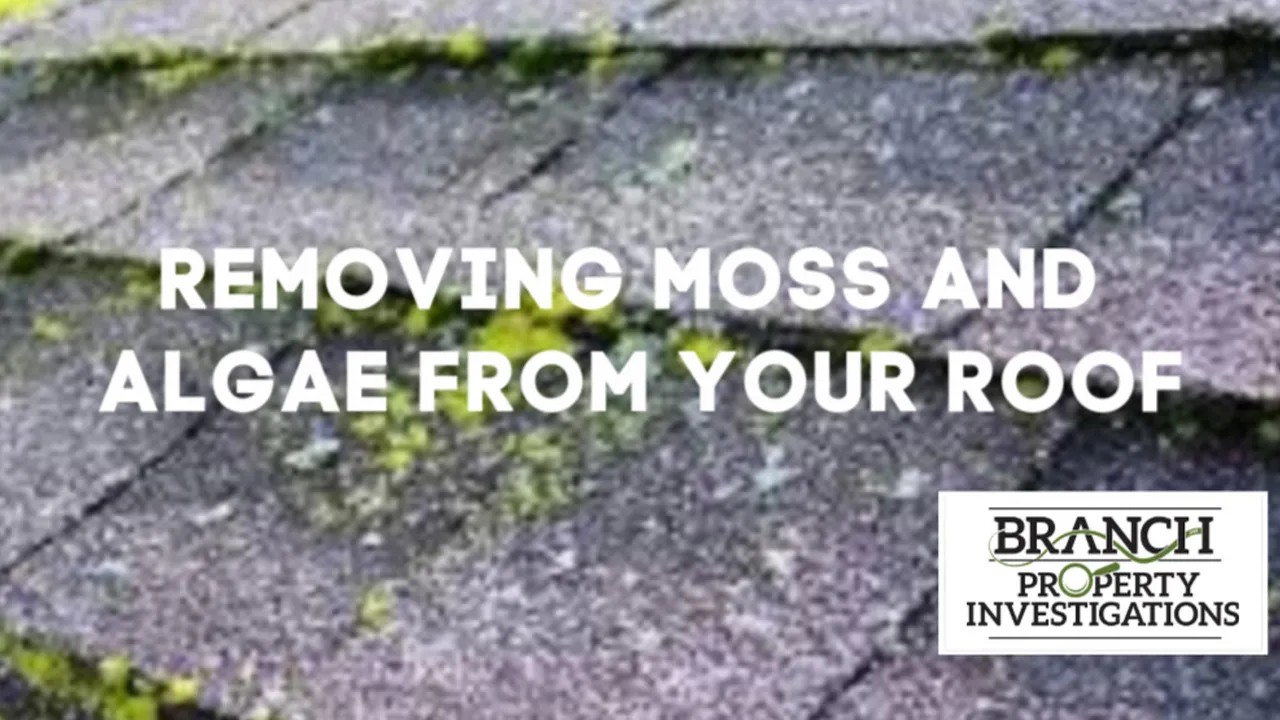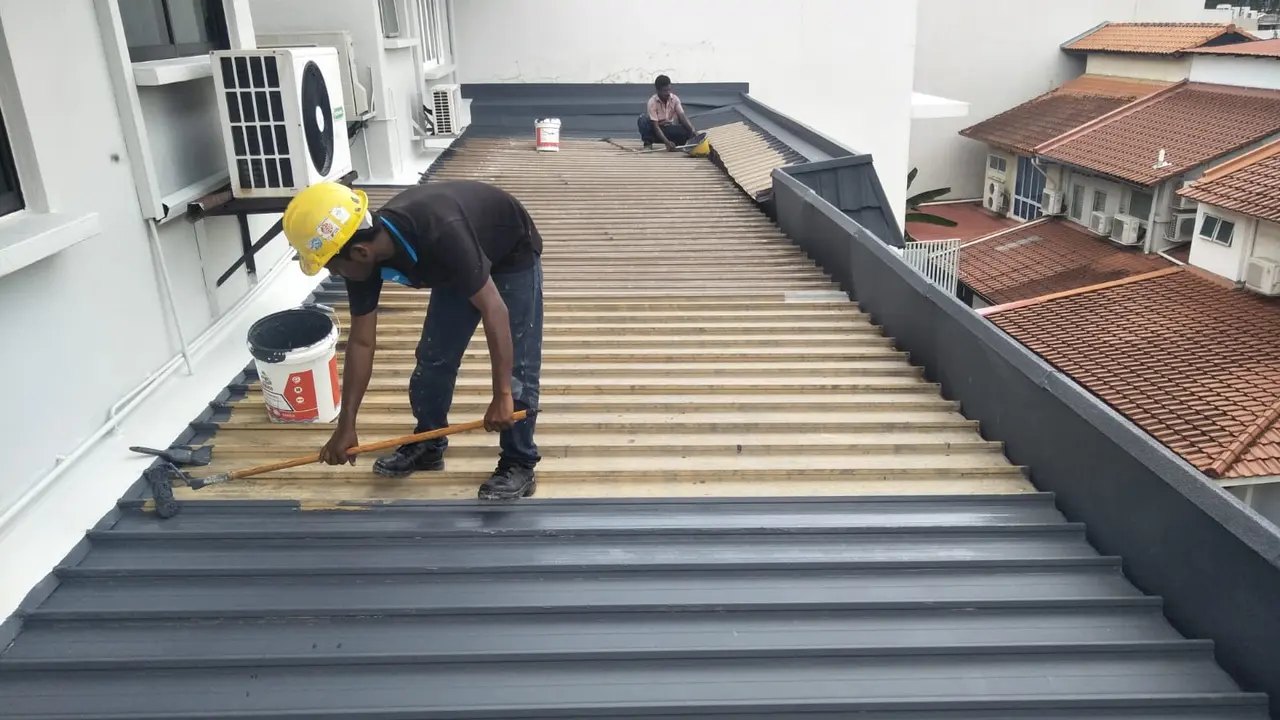Advanced Adhesives for Roofing Applications
Understand the importance of wind uplift resistance in roofing and how it protects your home in stormy conditions.

Wind Uplift Resistance in Roofing: Protecting Your Home from Stormy Conditions
Hey there, homeowners! Let's talk about something super important, especially if you live in an area prone to strong winds or even hurricanes: wind uplift resistance in your roofing. You might not think about it much, but when a big storm rolls in, the wind isn't just pushing down on your roof; it's also trying to lift it right off your house! This phenomenon, known as wind uplift, can cause significant damage, from loose shingles to a completely detached roof. So, understanding how your roof resists this force and what you can do to enhance its protection is absolutely crucial. We're going to dive deep into why wind uplift resistance matters, how it's measured, the different ways roofs are designed to combat it, and even some specific products and their applications.
What is Wind Uplift and Why is it a Big Deal?
Imagine a strong gust of wind hitting your house. You might picture it pushing against the walls or the side of your roof. But what actually happens is a bit more complex, thanks to something called Bernoulli's principle. As wind flows over the curved surface of your roof, it speeds up, creating an area of lower pressure above the roof. At the same time, wind can get trapped inside your house, creating higher pressure underneath the roof. This difference in pressure creates a lifting force, essentially trying to suck your roof upwards, much like how an airplane wing generates lift. This isn't just a minor inconvenience; it's a major cause of roof failure during severe weather events. When your roof fails, it exposes your home's interior to rain, debris, and further structural damage, leading to costly repairs and potential safety hazards.
How is Wind Uplift Resistance Measured and Rated?
When we talk about wind uplift resistance, we're often referring to how well a roofing system can withstand these lifting forces. This isn't just a guess; there are specific standards and tests to measure it. In the United States, for example, you'll often hear about ratings from organizations like Underwriters Laboratories (UL) and the American Society for Testing and Materials (ASTM). Key tests include:
- UL 2218 (Impact Resistance): While not directly about uplift, a roof's ability to resist impact from wind-borne debris is closely related to its overall storm resilience.
- ASTM D3161 (Wind Resistance of Asphalt Shingles): This test evaluates how well asphalt shingles stay attached to the roof deck under high wind conditions. Shingles are typically rated as Class A, B, or C, with Class A being the highest resistance (withstanding winds up to 110 mph).
- ASTM D7158 (Wind Resistance of Asphalt Shingles): This is a newer standard that provides more rigorous testing for wind resistance, often resulting in higher wind speed ratings for shingles.
- FM Approvals (Factory Mutual): For commercial and industrial roofing, FM Approvals provides rigorous testing and certification for wind uplift resistance, often using classifications like FM 1-60, FM 1-90, FM 1-120, etc., where the number indicates the uplift pressure (in pounds per square foot) the system can withstand.
These ratings are crucial because they give you a quantifiable measure of how much wind your roof can handle. When choosing roofing materials, especially in high-wind zones, always look for products with high wind uplift resistance ratings.
Key Factors Influencing Wind Uplift Resistance in Your Roof System
It's not just one thing that makes a roof wind-resistant; it's a combination of several elements working together. Let's break down the most important factors:
Roofing Material Selection: The First Line of Defense Against Wind
The type of material you choose plays a massive role. Some materials are inherently more wind-resistant than others due to their weight, flexibility, and how they're installed.
- Asphalt Shingles: While popular, their wind resistance varies greatly. Look for heavy, architectural or laminate shingles with strong adhesive strips. Many modern asphalt shingles are rated for 110 mph to 130 mph winds.
- Metal Roofing: Standing seam metal roofs are excellent for wind resistance. Their interlocking panels and concealed fasteners create a very strong, continuous surface. Metal roofs can often withstand winds exceeding 140 mph.
- Tile Roofing (Clay/Concrete): These are heavy and durable, but their wind resistance depends heavily on proper installation, including secure fastening of each tile. In high-wind areas, tiles need to be mechanically fastened, not just laid.
- Slate Roofing: Similar to tiles, slate is very heavy and durable. Proper installation with copper nails and overlapping patterns provides excellent wind resistance.
- EPDM/TPO/PVC (Flat Roofs): For low-slope or flat roofs, mechanically fastened or fully adhered single-ply membranes offer good wind resistance. The adhesion or fastening pattern is critical here.
Fastening Methods and Adhesives: Keeping Everything Locked Down
How your roofing material is attached to the roof deck is just as important as the material itself. More fasteners, strategically placed, generally mean better wind resistance.
- Nailing Patterns: For shingles, using the correct number of nails (typically 4-6 per shingle) and placing them in the designated nailing strip is vital. In high-wind areas, a 6-nail pattern is often recommended or even required by code.
- Adhesives: Many shingles have factory-applied adhesive strips that seal them to the underlying shingle, creating a strong bond once activated by the sun's heat. Supplemental adhesives or sealants can be used in extreme conditions.
- Mechanical Fasteners: For metal, tile, and flat roofs, screws, clips, and other mechanical fasteners are used to secure the material directly to the roof deck or structural components. The type and spacing of these fasteners are critical.
- Full Adhesion: For single-ply membranes, a full layer of adhesive can be used to bond the membrane directly to the insulation or deck, creating a very strong, continuous bond.
Roof Deck and Underlayment: The Foundation of Resistance
The structural integrity of your roof starts with the deck and the underlayment beneath your primary roofing material.
- Roof Deck Attachment: The plywood or OSB sheathing that forms your roof deck needs to be securely fastened to the rafters or trusses. Using the correct type and spacing of nails or screws is essential. In high-wind zones, enhanced fastening schedules (e.g., closer nail spacing, ring-shank nails) are often mandated.
- Underlayment: A high-quality, synthetic underlayment or self-adhering membrane provides an extra layer of protection. These materials are more tear-resistant and can help prevent water intrusion even if some primary roofing material is lost during a storm. Some self-adhering membranes also contribute to the overall uplift resistance by bonding to the deck.
Roof Design and Geometry: Shaping Up for Storms
The shape and slope of your roof also play a role in how it interacts with wind.
- Hip Roofs vs. Gable Roofs: Hip roofs (where all sides slope downwards to the walls) generally perform better in high winds than gable roofs (which have two sloping sides and two vertical ends). Gable ends can create more uplift pressure and are more vulnerable to wind damage.
- Roof Overhangs: While aesthetically pleasing, large overhangs can act like sails, catching the wind and increasing uplift forces. Proper fastening of fascia and soffit is crucial to prevent these areas from being torn off.
- Roof Slope: Extremely low-slope roofs can be more susceptible to wind uplift at the edges and corners, while very steep roofs can also experience unique wind effects.
Specific Products and Solutions for Enhanced Wind Uplift Resistance
Now, let's get into some concrete examples of products and systems designed to boost your roof's wind resilience. Remember, product availability and specific ratings can vary by region, so always check with local suppliers and contractors.
1. High-Performance Asphalt Shingles
Many manufacturers offer premium asphalt shingles specifically engineered for high-wind performance.
- Product Example: GAF Timberline HDZ Shingles
- Features: These shingles boast a StrikeZone™ Nailing Area, which is a wider, clearly defined area for nailing, making it easier for installers to hit the sweet spot and ensure proper fastening. They also feature Dura Grip™ Adhesive, which creates a strong, tight seal. GAF offers a WindProven™ Limited Wind Warranty with no maximum wind speed limitation when installed with at least 4 qualifying GAF accessories.
- Use Case: Ideal for homeowners in hurricane-prone coastal regions (like Florida, Gulf Coast, Southeast Asia) or areas with frequent strong thunderstorms (Midwest US).
- Comparison: Compared to standard 3-tab shingles, Timberline HDZ offers significantly better wind resistance and a more robust, architectural look.
- Estimated Price Range: For materials only, expect to pay around $100-$150 per square (100 sq ft). Installation costs will add significantly to this.
- Product Example: Owens Corning Duration Series Shingles
- Features: These shingles feature SureNail® Technology, which includes a unique fabric strip in the nailing area that provides exceptional gripping power. This helps to prevent nail pull-through, a common failure point in high winds. They are rated for 130 mph wind resistance.
- Use Case: Excellent for homes in areas experiencing high winds, including many parts of the US and Southeast Asia where tropical storms are common.
- Comparison: Similar to GAF HDZ in its focus on enhanced nailing and adhesive technology, offering superior performance over basic shingles.
- Estimated Price Range: Materials typically range from $90-$140 per square.
2. Standing Seam Metal Roofing Systems
Metal roofs, particularly standing seam, are champions of wind resistance due to their interlocking panels and robust fastening.
- Product Example: Sheffield Metals SMI 2.0 Standing Seam Panels
- Features: These panels are typically 24-gauge steel, mechanically seamed together, and fastened with concealed clips. This creates a continuous, monolithic roof surface that is incredibly resistant to uplift. They often meet or exceed stringent wind uplift requirements, including FM Approvals.
- Use Case: Perfect for homes in extreme wind zones, commercial buildings, or anyone looking for a long-lasting, low-maintenance roof with superior storm protection.
- Comparison: Far superior to asphalt shingles in terms of wind resistance and longevity. While the upfront cost is higher, the lifespan and durability often justify the investment.
- Estimated Price Range: Materials alone can be $300-$600+ per square, depending on the metal type (steel, aluminum, copper) and finish.
- Product Example: McElroy Metal Max-Rib Ultra
- Features: While more of an exposed fastener panel, some profiles like Max-Rib Ultra are designed with deeper ribs and stronger fastening points to enhance wind resistance compared to standard agricultural panels. They are often used in residential applications where a more industrial look is desired.
- Use Case: Suitable for homes in moderate to high-wind areas where budget is a concern but better than shingle performance is desired.
- Comparison: Offers better wind resistance than many asphalt shingles but generally not as robust as a concealed fastener standing seam system.
- Estimated Price Range: Materials typically $150-$300 per square.
3. Enhanced Underlayments and Adhesives
Don't underestimate the power of what's underneath your primary roofing material.
- Product Example: CertainTeed WinterGuard® Self-Adhering Underlayment
- Features: This is a rubberized asphalt membrane that self-adheres to the roof deck, creating a watertight seal. It's primarily designed for ice dam protection but also provides significant wind uplift resistance by bonding the roof deck and preventing water intrusion if the primary roofing material is compromised.
- Use Case: Essential for homes in cold climates prone to ice dams, but also highly beneficial in high-wind areas as a secondary water barrier.
- Comparison: Far superior to traditional felt paper in terms of adhesion, waterproofing, and tear resistance.
- Estimated Price Range: Around $50-$80 per roll (covers about 2 squares).
- Product Example: Polyglass Polystick® TU Plus Self-Adhered Underlayment
- Features: A high-temperature, self-adhered underlayment designed for tile and metal roofs. Its strong adhesive and robust construction provide excellent protection against wind-driven rain and contribute to the overall system's wind uplift resistance.
- Use Case: Ideal for tile and metal roofs in hot, humid climates (like Southeast Asia) and high-wind zones.
- Comparison: A premium underlayment offering superior performance and durability compared to standard synthetic underlayments.
- Estimated Price Range: Around $70-$120 per roll.
4. Specialized Fasteners and Clips
Sometimes, it's the small components that make a big difference.
- Product Example: Hurricane Clips/Straps (e.g., Simpson Strong-Tie H1, H2.5)
- Features: These metal connectors are used to strengthen the connection between the roof trusses/rafters and the wall top plates. They are designed to resist uplift forces that try to separate the roof structure from the rest of the house.
- Use Case: Absolutely critical for new construction in hurricane-prone regions and highly recommended for retrofitting older homes in such areas.
- Comparison: These are structural components, not roofing materials, but they are integral to the overall wind resistance of the entire roof system.
- Estimated Price Range: Relatively inexpensive, typically a few dollars per clip, but installation labor adds to the cost.
- Product Example: Enhanced Fastening Schedules for Decking
- Features: This isn't a specific product but a practice. It involves using more nails or screws (e.g., 6-inch on-center spacing instead of 12-inch) and potentially longer or ring-shank fasteners to secure the roof sheathing to the rafters/trusses.
- Use Case: A fundamental requirement for new construction and re-roofing projects in high-wind areas, often mandated by local building codes.
- Comparison: A cost-effective way to significantly improve the structural integrity of the roof deck.
- Estimated Price Range: Minimal additional material cost, primarily labor.
Installation Matters: The Human Element in Wind Resistance
Even the best materials won't perform if they're not installed correctly. This is where a skilled and reputable roofing contractor comes in. Proper installation includes:
- Following Manufacturer Specifications: Adhering strictly to the manufacturer's guidelines for nailing patterns, adhesive application, and flashing details.
- Adhering to Building Codes: Ensuring all work meets or exceeds local building codes, especially those related to high-wind zones.
- Proper Flashing: Correctly installed flashing around chimneys, vents, skylights, and valleys is crucial to prevent water intrusion and ensure the integrity of the roof system.
- Edge Details: The edges of the roof (eaves and rakes) are particularly vulnerable to wind uplift. Proper drip edge, fascia, and starter shingle installation are vital.
Maintenance for Ongoing Wind Uplift Protection
Your roof's wind resistance isn't a one-and-done deal. Regular maintenance helps ensure it remains robust over time.
- Regular Inspections: Periodically check for loose, cracked, or missing shingles/tiles, especially after strong wind events.
- Trim Trees: Keep tree branches trimmed away from your roof to prevent them from falling and causing damage during storms.
- Clear Gutters: Ensure gutters are clear to allow proper drainage, preventing water buildup that can compromise roof integrity.
- Address Minor Repairs Promptly: Don't let small issues escalate. A loose shingle today could lead to a major leak or further damage in the next storm.
Making the Right Choice for Your Home
Choosing a roof with excellent wind uplift resistance is one of the smartest investments you can make for your home's safety and longevity, especially if you live in a storm-prone region. It's not just about the initial cost; it's about peace of mind and protecting your biggest asset from the unpredictable forces of nature. When you're talking to your roofing contractor, don't hesitate to ask about wind ratings, fastening schedules, and specific products designed for high-wind performance. A little extra investment upfront can save you a whole lot of headache and expense down the road. Stay safe out there!
:max_bytes(150000):strip_icc()/277019-baked-pork-chops-with-cream-of-mushroom-soup-DDMFS-beauty-4x3-BG-7505-5762b731cf30447d9cbbbbbf387beafa.jpg)






